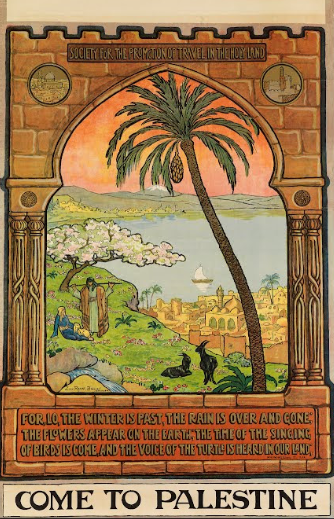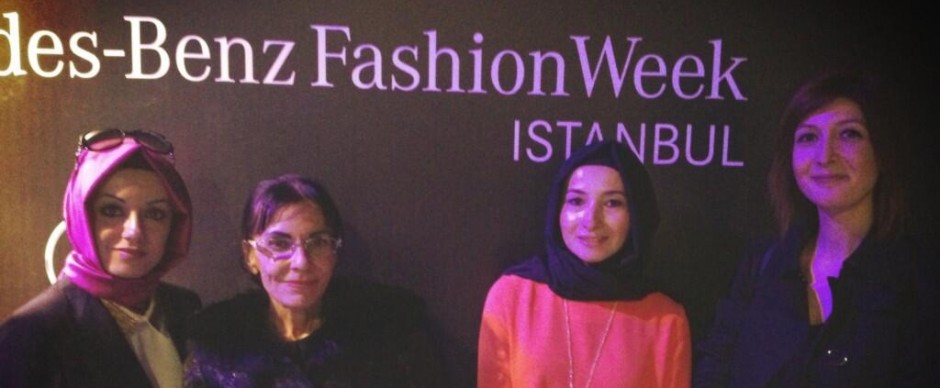
Since at least the mid-nineteenth century, with the increasing spread of colonialism and the fall of the Ottoman empire, imperial world powers have essentialized the practitioners of the religion of Islam to be constitutive of a unified race. As with all processes of racialization, this involved not just a colonization of land with Muslims on it, but an accompanying erasure of the personhood of Muslims. I would like to make the overly-ambitious-for-a-short-blog-post argument that this process of racialization and essentialization has played a constitutive role in the occupation of Palestine.
Critical theorist Tomoko Masuzawa, historian Cemil Aydin, and postcolonial thinker Edward Said make clear that the presentation of Islam as a problem, an impediment to the expansion of British global empire, led to the racialization and essentialization of Muslims. The advent of European modernity can be said to have been brought on by the colonial encounter with the so-called “Mohammedan” (a colonial misnomer and pejorative term used to refer to Muslims) who had, up until the fifteenth century, held dominion over lands which the Europeans now wanted to claim for their own (Masuzawa, 180-182). In this project of Western expansion, the Near East was seen as simultaneously an Orientalized “land of desire” and also an impediment to attaining the objects of said desire (Masuzawa, 183). In other words, the Muslim rulers had spices and other resources that the Europeans wanted, temporarily giving these Muslim rulers political and economic sway, only to have this abruptly taken away by colonial expansion and domination granting Europeans control over said resources (Masuzawa, 183-184). The point I would like to draw out below is that in the contemporary postcolonial moment, the ramifications of the European domination and control over Middle Eastern resources still plays out in Palestine through the control of not just Palestine’s physical goods, but Palestinians’ identities.
Picking up this historical narrative in the nineteenth century, Aydin undoes our understanding of a given, unified, global ummah while simultaneously demonstrating how the idea of such a unity came to be. Aydin points out that the conflict between “Islam” and “the West” was not always clear cut. As the Imperial world order deteriorated, it led to the categorization of Muslims as a race. As Aydin makes clear, power functions through control of narrative. After the Ottomans lost in World War I, the British took over Muslim societies in Palestine and Iraq and thus had the power to decide that a person’s Muslimness was the most important thing about them (Aydin, 101). This essentialization allowed for the imaginary of the “Muslim world” to be seen as a unitary thing to be displaced by an equally imaginary “Jewish world” through the British Empire’s endorsement of Zionism with the Balfour Declaration (Aydin, 120). Since then, Muslims have occasionally turned around and made use of their perceived unity for pan-Islamic solidarity, such as the Muslim Brotherhood’s support for the Palestinian revolt in 1936 (Aydin, 151). The very existence of Muslim holy sites in Jewish controlled Jerusalem made the question of Palestine an inherently religious issue. In the context of mid-twentieth century postcolonialism, questions of Palestinian liberation became key issues for the Muslim world (Aydin, 156).
The displacement of Palestinians through the aforementioned essentializations, racializations, and other various tools of colonialism creates a unique situation wherein what it means to be Palestinian must be reclaimed, or recreated anew. Read in tandem with Aydin and Said, religion scholar David Chidester’s discussion of the concept of indigeneity brings to light important nuances of the Palestinian situation,
“First, indigeneity represents a range of analytical strategies based on the recovery of place, the authenticity of tradition, and the assertion of self-determination in a project to forge postcolonial meaning and power on indigenous terms. Privileging the self-representation of indigenous people who have passed through the experience of colonization, indigeneity generates analytical terms for recovering the purity of local traditions from the defiling effects of global imperialism … ‘Colonization is not satisfied merely with holding a people in its grip and emptying the native’s brain of all form and content,’ Fanon observed. ‘By a kind of perverted logic, it turns to the past of oppressed people, and distorts, disfigures and destroys it’ (Fanon, 1963, p. 170)” (Chidester, 1858).
Here the ideas of Chidester and the philosopher Frantz Fanon can help us to understand the Palestinian situation as far as Palestinian history has been distorted in such a way as to erase the presence of Palestinian people. Israeli colonizers displace local Palestinians and occupy the land of Palestine as if there were no people there before.
The concept of indigeneity outlined above can also be applied to Aydin’s historical analyses of uses of “the idea of the Muslim world” by Muslims themselves for unifying purposes, as well as his discussions of Pan-Islamism, regionalism, and nationalism used as realpolitik for asserting the inevitability of empires, and not necessarily having to do with religion. The Palestinian/Israeli problem is not simply one of religion, but of empire, colonialism, and race. Said’s chapter “Towards Palestinian Self-Determination” is also relevant here as far as he discusses Palestinians’ reclamation of what it means to be Palestinian and Muslim post-colonization. Said argues that this reclamation must happen in the present for the Palestinian as whatever “indigenous past” they had has been erased by the violence of colonization.
“The Palestinian must make the present since the present is not an imaginative luxury but a literal, existential necessity. A scene barely accommodates him and becomes a provocation: The paradox of contemporaneity for the Palestinian is very sharp indeed. If the present cannot be ‘given’ simply (that is, if time will not allow him either to differentiate clearly between his past and his present or to correct them because the 1948 disaster [the Balfour Declaration], unmentioned except as an episode hidden within episodes, prevents continuity), it is intelligible only as an achievement.” (Said, 153)
Through the historical processes drawn out by Masuzawa, Said, Chidester, and Aydin, it becomes clear how the Palestinian, and the colonized subject in general, is essentialized, placed in a box, and erased. Displaced not only from their land, but from their very identity as far it is defined and co-opted by the colonizer, the Palestinian is physically and psychologically displaced. Israel seeks to further expand and occupy Palestine through a simultaneous dehumanization of the Palestinian and therefore a disconnection between the Palestinian and the very land they stand on. In order for Israel to conceptualize Palestine as something which can be occupied, the Palestinians must be deemed inhuman and treated as such. It is not enough that their very existence is negated, but their connection to the space and time they inhabit must be dismantled. As queer theorist Jasbir Puar and philosopher Reza Negarestani make clear, it is through the drive towards supposedly beneficial aspects of capitalism (expansion of Israeli territory, exploitation of Palestinian workers under the guise of “economic rehabilitation”) as well as through constant digital occupation of air and land (texts sent to Palestinians’ phones — routed through Israeli telecommunications companies — alerting them of incoming airstrikes, drone surveillance used for three-dimensional mapping of Palestinian territory) that the dehumanization of Palestinians and the expropriation of their land is made possible (Puar, 15; Negarestani, 183-184).
The minority consciousness of the Zionists leads to a simultaneous generalization of what it means to be a part of the new Jewish nation in Palestine, and a harsh separation between who can and can’t be a part of this new nation (Said, 147). As far as generalization, the “Come to Palestine” poster above was strategically designed so as to appeal not only to Jews of the Diaspora, but to Christians as well through its depiction of the Sea of Galilee, a hotspot for Jesus and his apostles. This scene is a romanticized Orientalist depiction of what the Holy Land has to offer; lush fields with almond trees and date palms framed by arabesque arches emblazoned with a verse from the Song of Songs welcoming in the new spring that has come after “the winter is past.” The representation of as many idyllic landmarks as possible crammed into one frame is reminiscent of a postcard. This is meant to attract tourists and spread the message that this is a place which deserves to be visited, as if there were not currently people already settled there that may be detrimentally affected by this influx of new settlers.
Colonization was seen as valiant exploration, all to further advance human (read European) knowledge as the Europeans were the race which had achieved the maturity to do such exploration, backed up by their enlightenment philosophies and ideals (Said, 77). There was one proper way to use and think about land and if those currently on that land weren’t occupying it “correctly” or up to European standards, they might as well have not been there at all as far as the Europeans were concerned (Said, 74-75).
In her defense of the right to criticize Israel, philosopher Judith Butler argues that “No political ethics can start from the assumption that Jews monopolise the position of victim. ‘Victim’ is a quickly transposable term: it can shift from minute to minute, from the Jew killed by suicide bombers on a bus to the Palestinian child killed by Israeli gunfire.” Just as any essentialization of a race or religion has dangerous consequences, the essentialization of Jews as “victims” and Muslims as “terrorists” distorts the reality of the postcolonial situation of Palestine, and the larger structural systems of power at play which deny the Palestinian recognition at all, let alone as a victim.
References
Aydin, Cemil. The Idea of the Muslim World: A Global Intellectual History. Cambridge, MA: Harvard University Press, 2017.
Blumenthal, Max. “International community promises to rebuild Gaza … with sweat shops to exploit Palestinian workers” Alternet. 16 October 2014. viewed 1 March, 2015.
Butler, Judith. “The Charge of Anti-Semitism: Jews, Israel and the Risks of Public Critique” in Precarious Life: The Powers of Mourning and Violence. London, UK: Verso, 2004.
Chidester, David. “Colonialism and Postcolonialism.” in Encyclopedia of Religion. Ed. Lindsay Jones. 2nd ed. Vol. 3. Detroit: Macmillan Reference USA, 2005. Gale Virtual Reference Library. 1853-1860.
Esmeir, Samera. “Colonial experiments in Gaza” Jadaliyya. 14 July, 2014. (originally published in 2012). viewed 1 February, 2015. <<http://www.jadaliyya.com/pages/index/8482/colonial-experiments-ingaza>>
Google Arts & Culture. 1929. “Raban, Ze’ev. Come to Palestine Poster for the Society for the Promotion of Travel in the Holy Land” Lithograph Poster. The Israel Museum, Jerusalem, Photo © The Israel Museum, Jerusalem © The Doron Family, Jerusalem. Accessed February 20, 2018. <<https://www.google.com/culturalinstitute/beta/asset/come-to-palestine-poster-for-the-society-for-the-promotion-of-travel-in-the-holy-land/JAGydpv1_K1r2w>>
Masuzawa, Tomoko. “Islam, a Semitic Religion.” in The Invention of World Religions. Chicago: University of Chicago Press, 2005. 179-206.
Puar, Jasbir. “The ‘Right’ to Maim: Disablement and Inhumanist Biopolitics in Palestine.” borderlands. 14, 1. (2015). 1-27.
Said, Edward. The Question of Palestine. New York: Vintage Books, 1979 [1992].
Said, Hashem & Zahriyeh, Ehab. “Gaza’s kids affected psychologically, physically by lifetime of violence” Al Jazeera. 31 July 2014. viewed 1 February, 2015.
Tawil-Souri, Helga. “Digital occupation: Gaza’s high-tech enclosure” Journal of Palestine Studies. 2012. vol. 41, no. 2, pp. 27-43.
Taylor, Adam. “Israel hopes phone calls to Palestinians will save lives. It ends up looking Orwellian” Washington Post. 17 July 2014. viewed 29 March 2018.
Negarestani, Reza. “Drafting the Inhuman: Conjectures on Capitalism and Organic Necrocracy.” in L. Bryant, N. Srnicek & G. Harman (eds). The Speculative Turn: Continental Materialism and Realism. re.press, (Melbourne 2011). pp. 183-184.
